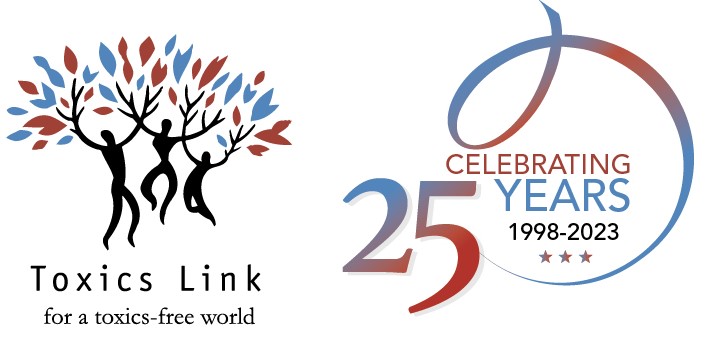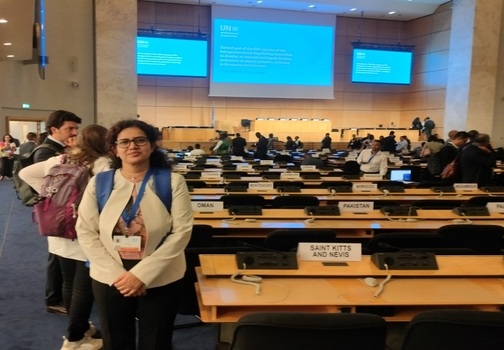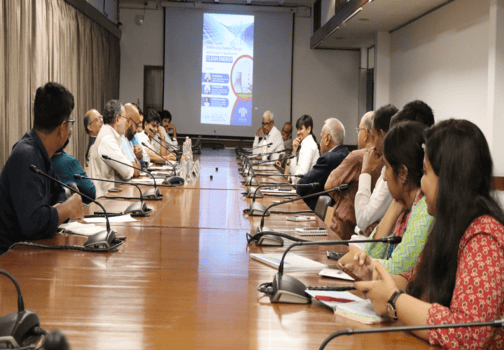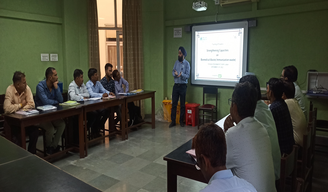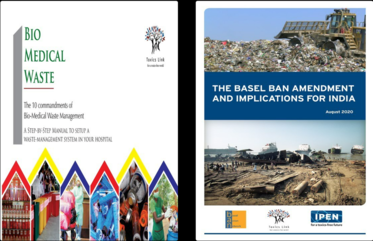CLEANING OF POLLUTED STRETCHES OF RIVERS
GOVERNMENT OF INDIA
MINISTRY OF JAL SHAKTI
DEPARTMENT OF WATER RESOURCES, RIVER DEVELOPMENT & GANGA REJUVENATION
RAJYA SABHA
STARRED QUESTION NO. *28
ANSWERED ON 05.02.2024
CLEANING OF POLLUTED STRETCHES OF RIVERS
*28 SHRI PRAMOD TIWARI
Will the Minister of JAL SHAKTI be pleased to state:
(a) whether Government is aware of the condition of polluted stretches of rivers in different parts of the country and if so, the details thereof;
(b) the steps being taken by Government in catering to the issue and cleaning these polluted stretches; and
(c) whether Government is planning to build any mechanism to effectively monitor the steps for control of pollution and rejuvenation of all polluted stretches of rivers in the country and if so, the details thereof?
ANSWER
THE MINISTER OF JAL SHAKTI (SHRI GAJENDRA SINGH SHEKHAWAT)
(a) to (c) : A statement is laid on the Table of the House.
STATEMENT REFERRED TO IN REPLY TO PARTS (a) TO (c) OF STARRED QUESTION NO. *28 TO BE ANSWERED ON 05.02.2024 IN RAJYA SABHA REGARDING
“CLEANING OF POLLUTED STRETCHES OF RIVERS”
(a) Rivers in the country are polluted mainly due to discharge of untreated and partially treated sewage from cities/towns and industrial effluents in their respective catchments, problems in operation and maintenance of sewage/ effluent treatment plants, lack of dilution and other non-point sources of pollution.Central Pollution Control Board (CPCB) in association with State Pollution Control Boards (SPCBs)/Pollution Control Committees (PCCs) in different States/Union Territories (UTs) has been monitoring the water quality of rivers and other water bodies through a network of monitoring stations under the National Water Quality Monitoring Programme (NWMP). Based on water quality monitoring results, pollution assessment of rivers has been carried out by CPCB from time to time. As per the latest CPCB report published in November 2022, 311 polluted river stretches have been identified on 279 rivers based on monitoring results in terms of Bio-chemical Oxygen Demand, an indicator of organic pollution.River-wise details of polluted river stretches identified can be accessed at:
https://cpcb.nic.in/openpdffile.php?id=UmVwb3J0RmlsZXMvMTQ5OF8xNjcyOTg4MDQ1X21lZGlhcG
hvdG8xMjk5NS5Wzgy
(b) & (c) Cleaning of river is a continuous process. The Central Government is supplementing the efforts of the State Governments and Union Territories in addressing the challenges of pollution of rivers by providing financial and technical assistance through Central Sector scheme of Namami GangeProgramme (NGP) for rivers in Ganga river basin and Central Sponsored Scheme National River Conservation Plan (NRCP) for other rivers in the country. The Namami Gange Programme has created a model for holistic river management to rejuvenate theriver and improve river health. This includes a comprehensive set of interventions such as waste watertreatment, river front management (ghats and crematoria development), e-flow, afforestation, biodiversity conservation, public participation, solid waste management, etc. So far, a total of 457 projects have been sanctioned at an estimated cost of ₹ 38,438.05 crore, out of which 280 projects have been completed and a total of 2844 million litres per day (MLD) sewage treatment capacity has been created. Sustained efforts to increase people’s participation have transformed the Mission into a Jan Andolan. Activities include – Ganga Utsav, NadiUtsav, regular cleanathons and plantation drives, Ghat Par Yoga, Ganga Aartis, etc. The efforts are also supported by dedicated cadres of Ganga saviours such as Ganga Praharis, Ganga VicharManch, Ganga Doots, etc. PRAYAG or Platform for Real-time Analysis of Yamuna And Ganga & their Tributaries (Monitoring Centre) is meticulously being used for planning and monitoring of projects, river water quality, performance of STPs, etc. through various online dashboards such as Ganga Tarang Portal, Jajmau Plant through Online Drone Data, PMT Tool Dashboard, Ganga Districts Performance Monitoring System, etc.
The above interventions have resulted in significant improvement of water quality of river Ganga. The comparison of median data of water quality parameters viz. Dissolved Oxygen (DO), Biochemical Oxygen Demand (BOD) and Faecal Coliforms (FC) of 2014 and 2023 indicate that DO median has improved at 32 locations, BOD median has improved at 43 locations and FC median has improved at 25 locations. Water quality of the stretch of river Ganga, from its origin to Haridwar, has attained a Class A category, a drinking water source without conventional treatment but after disinfection. Significant improvements are also observed in biodiversity with increased species sightings of Dolphins, Otters, Hilsa, Turtles, etc. in the river.The Namami Gange model provides the way forward for States to address pollution issues in other rivers. National River Conservation Plan (NRCP) has so far covered polluted stretches on 51 rivers in 96 towns spread over 16 States at a sanctioned cost of Rs. 8383.93 crore. An amount of Rs.3394.84 crore has been released to various State Governments for implementation of pollution abatement schemes and a treatment capacity of 2910.50 MLD has been created resulting in reduction in pollution load being discharged to various rivers. In addition, sewerage infrastructure is also created under programs of Atal Mission for Rejuvenation & Urban Transformation (AMRUT) and Smart Cities Mission of Ministry of Housing & Urban Affairs. As per the provisions of Environment (Protection) Act, 1986 and Water (Prevention & Control of Pollution), Act 1974, industrial units are required to install effluent treatment plants (ETPs) and treat their effluents to comply with stipulated environmental standards before discharging into river and water bodies. Accordingly, CPCB, State Pollution Control Boards (SPCBs) and Pollution Control Committees (PCCs) monitor industries with respect to effluent discharge standards and take punitive action for noncompliance under provisions of these Acts.Besides, in compliance with the orders of Hon’ble National Green Tribunal (NGT) in Original Application No.673/2018 regarding rejuvenation of polluted river stretches in the country, concerned States/UTs are implementing Action Plans for restoration of the polluted stretches in their jurisdiction. River Rejuvenation Committees (RRCs) have been constituted by State Governments/UTs for preparation and implementation of approved Action Plans, within the stipulated timelines. As per the orders of NGT, regular review on implementation of these action plans is undertaken in the States/UTs and the same is also done at the Central level by Secretary, Department of Water Resources, River Development andGanga Rejuvenation, Ministry of Jal Shakti, Govt. of India.
